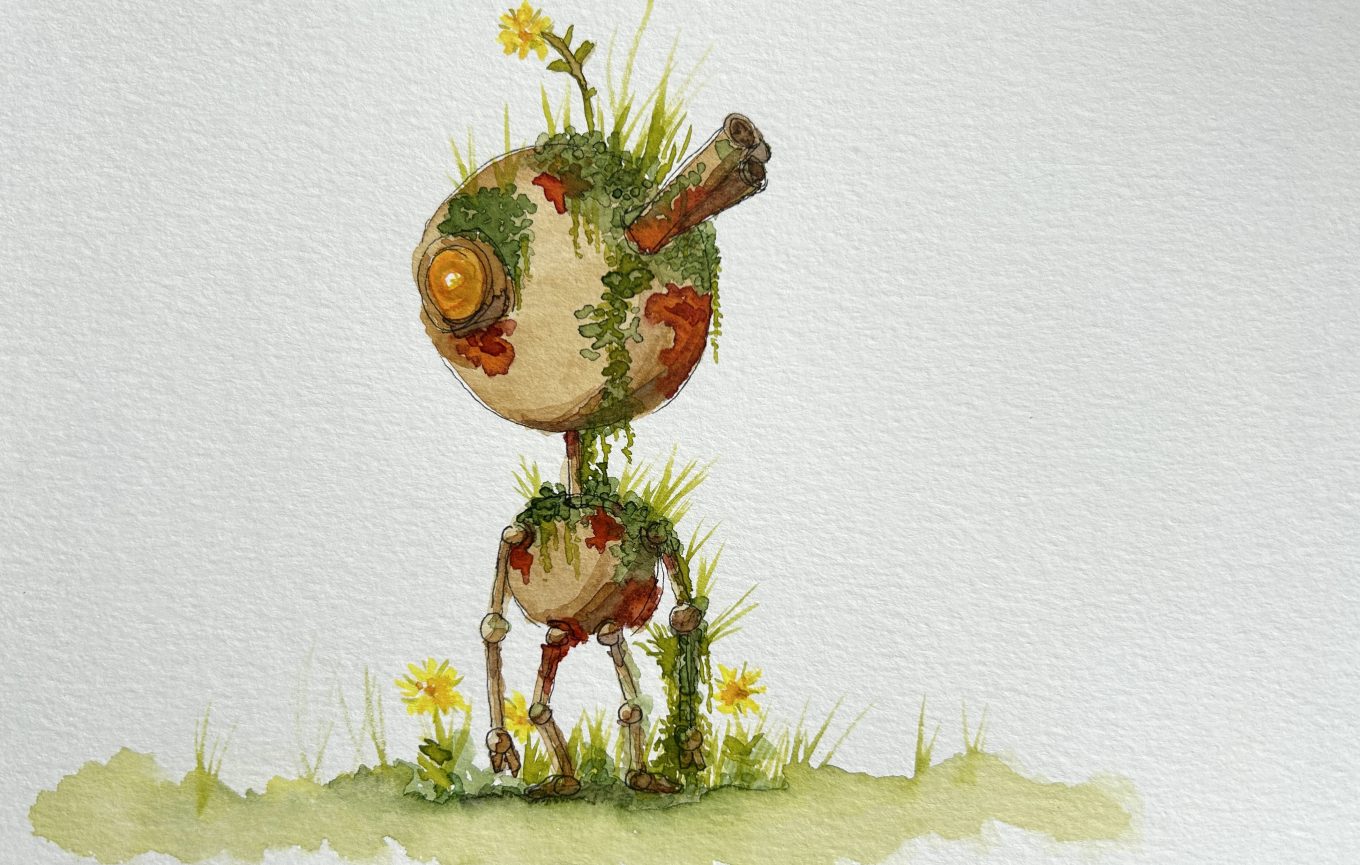of a fictional nature.
One of the struggles any artist will eventually face, I think, is that of defining a personal style.
What do you draw?
What medium do you use?
What feeling are you going for?
How do you want to be seen?
A lot of learning comes from imitation of someone else, watching the technique of others and trying to replicate it. But that’s just all it is: technique. At some point a whole bunch of pieces need to come together to define art: style, form, message, you.
rust and decay
During the pandemic I got into painting miniatures. Specifically, I bought a 3d printer, downloaded a set of designs for one of those big table-top strategy dice games, and then printed as many of the pieces and scenery objects as I could. And then I painted them. The style was post-apocalyptic dystopian, and I found that painting one particular feature of that was quite satisfying: decay. Rust is abstractions of reds and browns and oranges. Overgrowth is organic shapes made of green and yellows. And somehow decay adds to the depth and feeling and story of whatever you draw.
A while back I went through a steampunk phase. Steampunk is an alternate universe kind of technology, the idea that progress marched on in the absence of electronics but that humanity figured out a way to build all it’s gadgets anyhow powered by clock-works and gears and kinetically powered motions. There is a lot of grease and brass and smoke and wood.
Adjacent to that I’ve been dabbling in art that extends along a kind of steampunk-futurist-apocalyptic mood: drawing pictures of steampunk-ish robots that have been left behind.
I like to draw and paint buildings and scenes and trees and animals that I see in reality.
I’m fascinated by drawing and painting science fiction scenes that never existed.
And it makes me wonder if my own style will evolve, or already had started to, from something that is as much a fascination as anything else.
